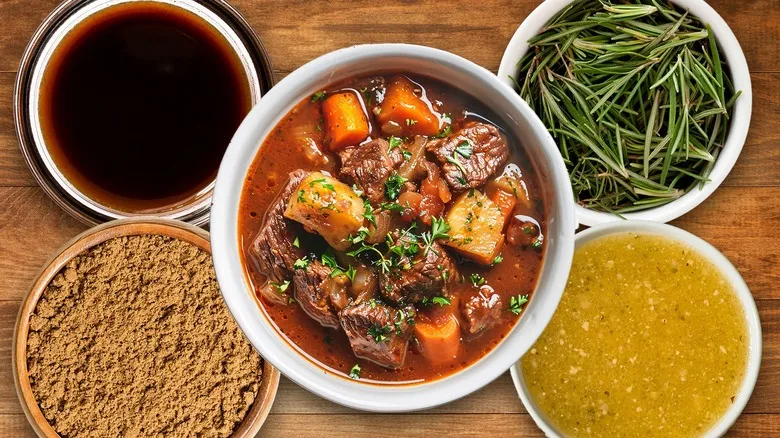1. Sauces or pastes containing anchovies add major depth (and no fishiness)
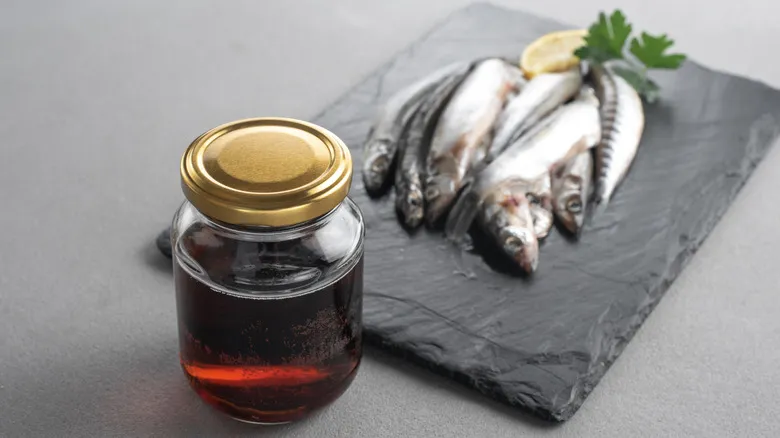
You can enhance the rich, meaty flavors of beef stew by incorporating ingredients that deliver umami, often referred to as the "fifth taste," which is attributed to the amino acid glutamate (glutamic acid). Umami embodies savoriness and can be found not only in obvious sources like seared beef but also in foods such as tomatoes, soy sauce, egg yolks, and fish. Anchovies are particularly renowned for their high umami content, with 100 grams of these small fish containing approximately 630 milligrams of naturally occurring glutamate. Adding just 1 tablespoon of anchovy paste to your beef stew can introduce a delightful meaty saltiness. (Ina Garten uses it as her secret ingredient in a tuna melt, but it complements non-seafood dishes beautifully as well!)
Marye Audet, a best-selling cookbook author and recipe developer at Restless Chipotle, enhances her beef stew by adding a splash of fish sauce, which she claims does not impart a fishy taste but rather enriches the dish, deepening its flavor and making it more succulent.
Audet stumbled upon this fish sauce technique when she ran out of another common flavor enhancer that is likely more prevalent in American kitchens than fish sauce: Worcestershire sauce. Interestingly, one of the main ingredients in this classic condiment is fermented anchovies. Just 1 teaspoon of Worcestershire sauce can significantly elevate the flavor of beef stew.
2. Amp up flavor with umami-enhancing seasonings
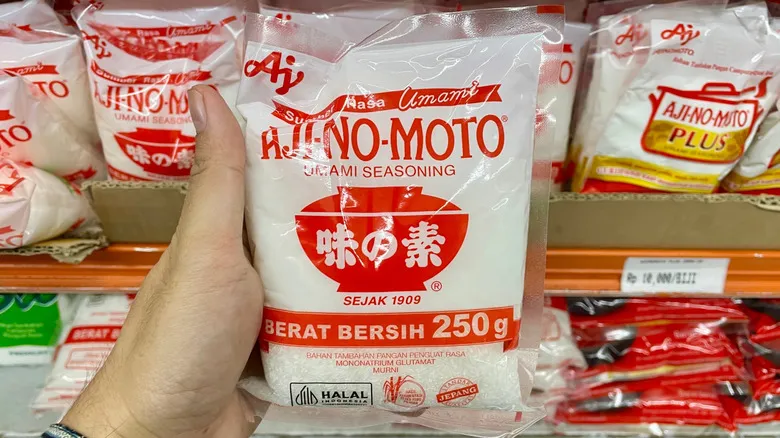
When it comes to creating a superior beef stew, there are several other ingredients with umami-boosting qualities that we shouldn't ignore. At the most fundamental level, salt enhances umami flavors—just consider how salting a fresh tomato intensifies its taste. However, there are many options beyond salt, particularly seasoning blends that include sources of glutamate. Mushrooms are rich in umami (more on mushrooms later), and they can be found in various seasonings, such as McCormick Umami Seasoning with Mushrooms and Onion, which pairs wonderfully with beef stew.
Additionally, there's monosodium glutamate (MSG) itself. Once unfairly blamed for a range of unexplained symptoms associated with Chinese cuisine, recent studies have classified MSG as "generally recognized as safe" (GRAS) by the FDA, placing it in the same category as common ingredients like black pepper and vinegar. When added before or during cooking, about ½ teaspoon of MSG can significantly enhance the flavor of your beef stew.
3. Mushrooms increase beef stew's heartiness and flavor

Flavor-boosting seasonings aren't the only way to infuse the rich umami of mushrooms into your beef stew. Adding the mushrooms themselves can enhance both the heartiness and taste of this rustic dish. Lindsey Baruch, CEO and founder of Lindsey Eats, suggests elevating beef stew with baby bella mushrooms for their deep, earthy flavor, particularly if you sauté them beforehand. In fact, cooking amplifies the flavor of any mushroom variety; they all inherently possess some level of the savory amino acid, glutamate, and the moisture loss during roasting intensifies this flavor.
While baby portobellos are an excellent option for beef stew, you might also want to experiment with shiitake mushrooms—either fresh or dried. Incorporate fresh shiitakes into the stew during the last five minutes of cooking. For dried shiitakes, which are especially rich in umami, you can either grind them into a powder or add them whole along with the other ingredients after browning the beef.
Then there are enoki mushrooms, which are small, long, and thin white mushrooms commonly used in Chinese, Japanese, or Korean stews. They offer an earthy mushroom flavor but in a milder form, with unique, almost fruity undertones. Similar to fresh shiitakes, fresh enoki mushrooms should be added to the beef stew at the end, requiring just about two minutes to cook through.
4. Fresh herbs bring brightness and complexity
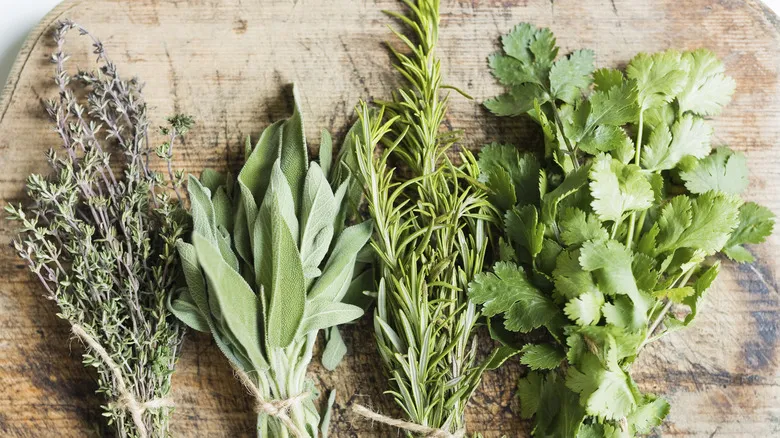
Dried herbs typically have a stronger flavor than their fresh counterparts, but fresh herbs bring their own unique depth to dishes. Just like the classic song, parsley, sage, rosemary, and thyme each contribute a distinct brightness to beef stew. Recipe developer Marye Audet considers rosemary and thyme to be the "essential" herbs for this dish. Parsley is also included—added just before serving to create a balancing contrast with the stew's savory flavors.
If you're accustomed to using only dried herbs, you'll need to adjust your timing when incorporating fresh herbs into your beef stew. As a general guideline, delicate fresh herbs like oregano or sage should be added later in the cooking process, as prolonged cooking can diminish their flavor and aroma. In contrast, sturdier herbs like thyme and rosemary can be added earlier, allowing ample time for their rich flavors to meld into the broth.
Navigating fresh herbs can be tricky if you don't grow them yourself, as purchasing them often means buying more than needed for a single recipe. Fortunately, you can freeze fresh herbs in an ice cube tray for later use. Simply chop the herbs and place them in the small compartments. Cover the more delicate herbs with water and the hardier ones with a neutral oil, then freeze. You can easily pop out the desired amount to thaw whenever you need them.
5. Bacon or pancetta elevate beef stew's richness and textural contrast
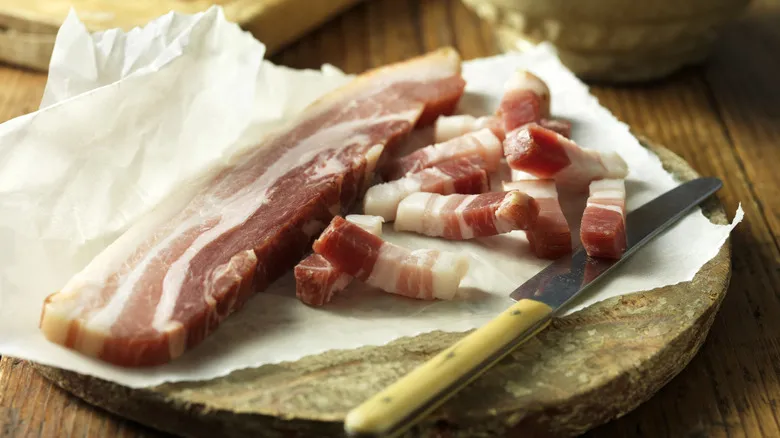
Anyone who strongly believes that bacon enhances everything will not be surprised to learn that it can significantly boost the richness of beef stew. Bacon infuses the dish with its smoky, salty flavors, adding unmatched depth and complexity. Approximately 8 ounces of chopped, cooked bacon is sufficient to enhance the savory elements in a single stew recipe.
Pancetta, another product derived from pork belly, yields similar effects, with just enough variation to keep things intriguing. The distinctions between bacon and pancetta primarily arise from their processing methods: bacon is usually smoked, while pancetta is salt-cured and then dried. As a result, instead of delivering bacon's characteristic smokiness, pancetta provides a more salty, ham-like taste. Since it is salt-cured, pancetta can be eaten straight from the package, unlike bacon. However, for beef stew, you can brown it first to render its flavorful fat, which can then be used to sear your beef.
6. Red wine, beer, or dry sherry lend nuanced flavors to beef stew

There are several reasons why people have enjoyed cooking with ethanol (the alcohol we consume) for centuries. Whether it's for its ability to tenderize tough cuts of meat or the vibrant, sharp flavors it imparts, alcoholic beverages have found a place in many kitchens — including in beef stews. Gen La Rocca, a professional chef and owner of Two Cloves Kitchen, loves to add red wine to her stew, starting after she browns the meat. She uses the wine to deglaze the pan, lifting all those delicious browned bits. This creates a flavorful base that balances acidity (another advantage of using alcohol) with savoriness as the stew simmers.
Sherry is another excellent choice that enhances the complexity and depth of beef stew. It's important to note that we’re not referring to cooking sherry, which is a lower-quality version with added salt. Dry sherry is one of the ways Vanessa Parish, executive director and co-founder of the Queer Food Foundation, experiments with acidity in her beef stew. Dry sherry offers a nutty, yeasty flavor with a bright tang that cuts through the richness in a delightful manner.
And, of course, there's beer. The contribution of this beloved beverage to stew largely depends on the type, with some beers being lighter and hoppier while others are darker and heavier. Guinness is a popular choice for the latter. Its creamy texture results in a richer gravy, and its signature deep roasted barley flavors are simply irresistible.
7. Different sources of acidity add their own flavors

While alcohol can enhance the acidity in beef stew, there are various alternatives that can introduce this essential element while adding their own unique flair to the dish. Balsamic vinegar is a timeless choice. Lindsey Baruch of Lindsey Eats highlights its brightness for a tangy balance. Cookbook author Marye Audet also endorses a touch of balsamic vinegar, but she suggests that a dash of lemon juice can work wonders too. As Audet notes, "It brightens up all those deep, rich flavors and makes them pop. It's like the finishing touch that brings everything together."
Vanessa Parish from the Queer Food Foundation sometimes opts for white balsamic vinegar in her beef stew. This variety is lighter in both flavor and color compared to traditional balsamic vinegar, and it tends to be slightly less sweet. Parish appreciates the distinctiveness it adds to an otherwise conventional dish.
Alternatively, if you're looking to incorporate both acidity and herbs in one go, consider using Italian dressing as a secret ingredient in your beef stew. This classic salad dressing typically includes olive oil, red or white wine vinegar, and a blend of herbs and spices—ingredients that already contribute to a remarkable beef stew. You can either brown your meat in the dressing or use it as a marinade for maximum flavor and tenderness.
8. A little brewed coffee unlocks a new flavor dimension

Coffee grounds are already a common ingredient in various dry rubs, contributing a rich, earthy bitterness that enhances the savory notes of the meat. While brewed coffee might not be a typical addition to beef stew, many adventurous cooks who love coffee have found that it can surprisingly enrich the dish. Just as a dash of fish sauce doesn’t make beef stew taste like seafood, a splash of coffee won’t turn it into a caffeinated concoction; instead, it adds that elusive "je ne sais quoi" that intrigues both the palate and the imagination.
For this purpose, strong brewed coffee is ideal. A dark, smoky French roast would work wonderfully, but any coffee you have on hand (or leftover in your coffee pot from breakfast) will do. If you're concerned about caffeine, decaf is perfectly acceptable as well. The amount you use is up to your preference, but starting with ½ cup mixed into your stock or broth is a good idea, adjusting to taste from there.
9. Allspice or cloves impart extra warmth to beef stew
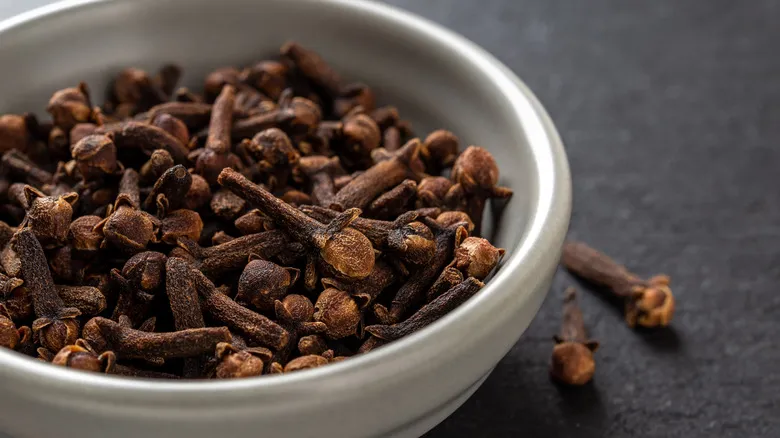
Allspice, despite its name, is actually a single, warm spice that belongs to the same family as cloves. The flavors of these two spices are quite similar, with allspice offering notes reminiscent of nutmeg, cinnamon, and clove, while clove is often described as tasting like allspice, cinnamon, and nutmeg as well! Both of these comforting spices provide a comparable warmth to various meats.
Allspice and cloves are frequently used in cozy, winter beverages such as hot apple cider, as well as in desserts like pumpkin pie. However, they also make appearances in a variety of savory dishes, including Jamaican jerk chicken, Swedish meatballs, and clove-studded hams, where they contribute a subtle complexity. Beef stew is another hearty dish that can benefit from the warmth these spices provide. A mere pinch of allspice or a sprinkle of cloves won’t drastically change the flavor profile, ensuring the dish remains recognizable. Instead, they add a rich depth that beautifully enhances the flavors of the meat and vegetables.
10. Paprika's sweet (or smoky) notes bring depth and balance
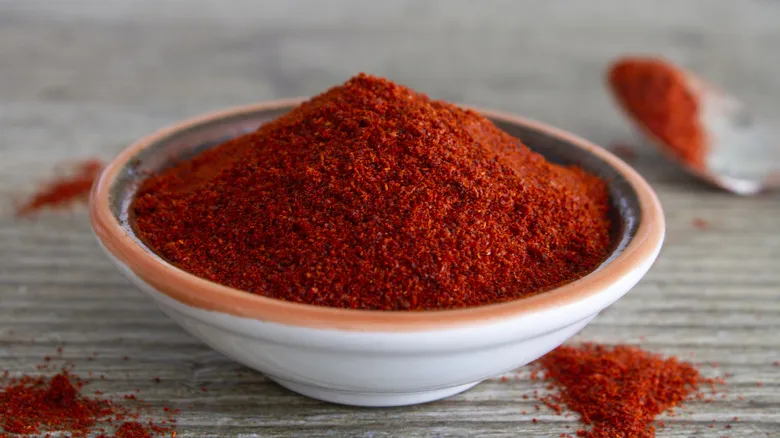
When looking for seasonings to enhance your beef stew, don't overlook paprika—ground dried red peppers. The standard paprika, simply labeled "paprika," is usually sweet paprika, offering a subtly sweet flavor with fruity and earthy undertones. Smoked paprika, known as pimentón, is the smoked variant of sweet paprika.
A classic dish that relies heavily on sweet paprika for its unique flavor is Hungarian goulash. While you don't need to use as much of this spice in your stew as you would for a traditional goulash (which typically calls for about ¼ cup), feel free to add more if you desire. For a lighter version, start with smaller amounts and don't hesitate to experiment with either the sweet or smoked varieties. A range of ½ to 2 teaspoons of sweet or smoked paprika can help adjust the flavor. If you opt for smoked paprika, using up to 2 tablespoons will impart a distinct smoky flavor reminiscent of cooking over an open fire.
11. A Parmesan rind's subtle nuttiness builds a savory foundation
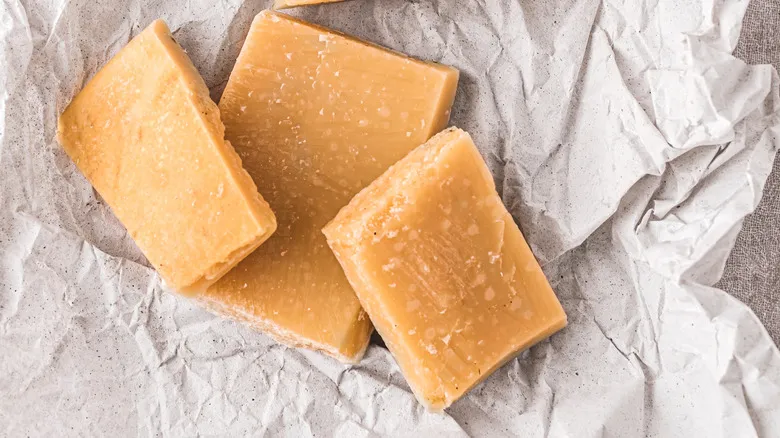
Beyond seasonings, spices, and acidic liquids, there’s another ingredient that can elevate the flavor of beef stew to new heights. Look no further than the cheese section — particularly a piece of Parmigiano Reggiano. Remove the cheese from the rind and set the cheese aside. In fact, incorporating a Parmesan cheese rind into your homemade broth is one of the best ways to enhance flavor, and the same principle applies to beef stew.
Recipe developer Marye Audet adds a Parmesan rind during the simmering phase of her beef stew. She shared with Chowhound that as the rind melts into the broth, it imparts an unparalleled savory richness to the dish. For Audet, the allure of a Parmesan rind is so compelling that she keeps a stash in her freezer for any recipe where its nutty umami flavor can work wonders.
12. Beef tenderloin makes for a faster finish

Suggestions for enhancing flavor are always appreciated, but it's also beneficial to have some time-saving strategies in your repertoire. Amy Casey, a personal chef and food blogger at Amy Casey Cooks, shared a tip with Chowhound that leverages an unconventional stew ingredient's quick cooking time to create a faster, more refined version of this classic dish. She suggests replacing tougher, slow-cooking stew meat with lean, quick-cooking beef tenderloin—a swap that maintains the dish's flavor.
Casey explained that she quickly sears cubes of beef tenderloin to medium-rare before sautéing the aromatics and vegetables. This is followed by a relatively brief simmer with the remaining ingredients, which for her includes fresh herbs, red wine vinegar, Dijon mustard, and tomato paste. The end result is a "stylish one-pot meal" that is perfect for special occasions or festive holiday dinners, all without the hours of labor over a hot stove.
Recommended

How To Keep Insulated Grocery Bags Sanitary For Frequent Shopping

5 Sodas To Try In A Float Instead Of Root Beer

What's In Poultry Seasoning?

5 Seasoning Blends That Transform Your Popcorn
Next up

